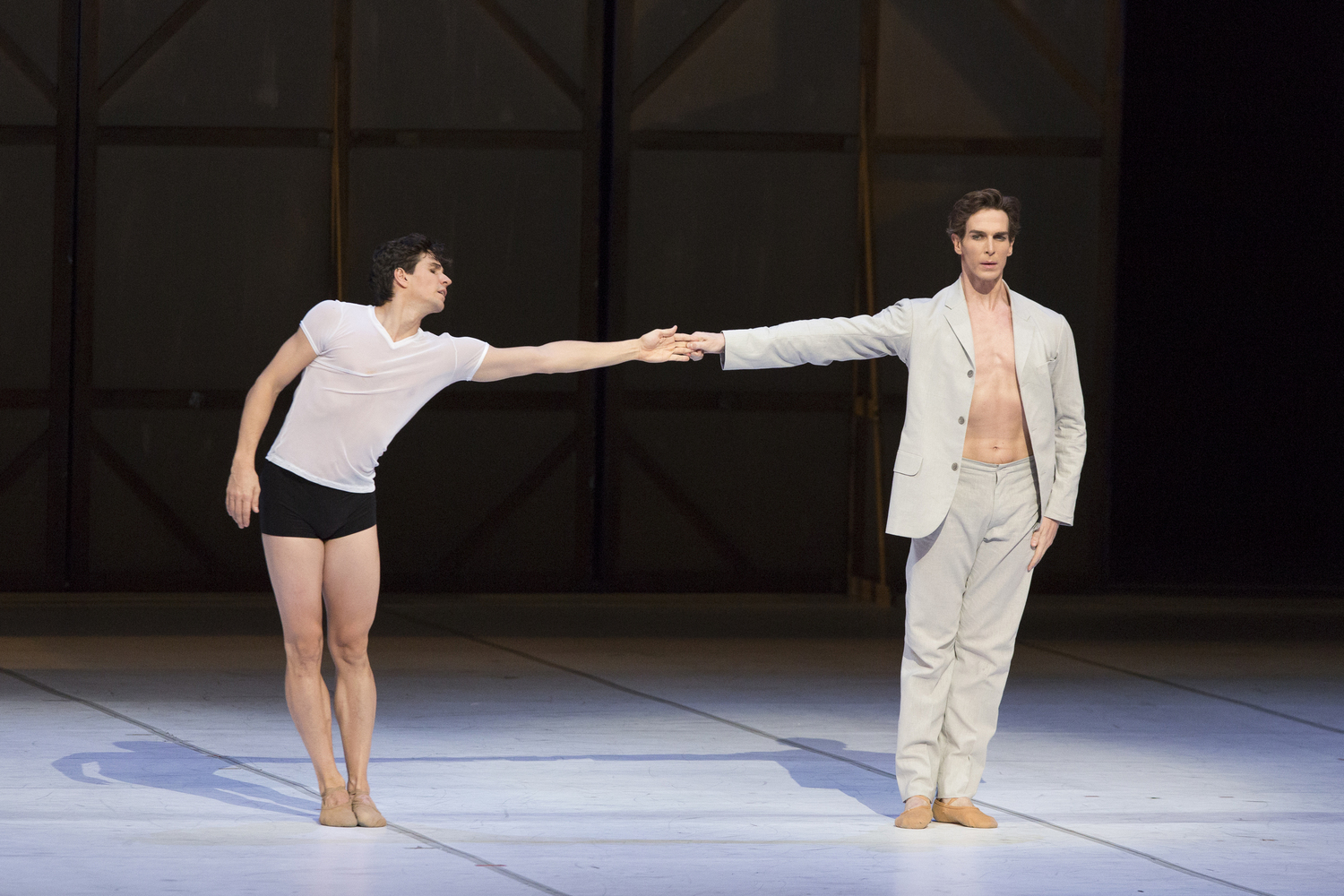Review: The National Ballet's NIJINSKY; The Dancer Trapped in the Man

The mind is a fascinating, terrifying and often incomprehensible place. The National Ballet of Canada's production of John Neumeier's NIJINSKY explores the mind through the lens of one of the world's most famous ballet dancers, Vaslav Nijinsky. Visiting some of Nijinsky's most iconic roles, the ballet is a conflict of identity. Neumeier's skilled theatricality encompasses the piece, informing the set, music and choreography - creating a work of art that is deliriously captivating.
Vaslav Nijinsky remains one of the greatest male ballet dancers this world has ever seen. Growing up in a family of Russian dancers (his parents and siblings all danced professionally), Nijinsky rose to fame quickly, joining the Imperial Ballet School in St. Petersburg at the age of 19. Serge Diaghilev, the impresario of a new company, the Ballet Russes, took an interest in the young Nijinsky; both artistically and romantically. Nijinsky joined the Ballet Russes, touring to Paris and igniting worldwide fame for the young ballet star. Fame allowed Nijinsky to experiment with new styles of dance, extending his classical technique into provocative new realms.
As the great Nijinsky, Guillaume Côté dances a stunning, gifted tribute. There is not a moment where Côté seems focused on his steps. Wild and driven by the music and emotion of the piece, he lives and breathes Neumeier's vision.
The driving theme at the core of this vision is that Nijinksy the dancer is very removed from Nijinsky the man. The further one of them progresses, the further the other seems to become lost. Neumeier communicates this dichotomy through very specific choreography - Côté's arms reach out, his palms facing out, as he seems to push the world away before abruptly grabbing his chest, closing himself off. Another movement that the dancers frequently reprise is the formation of a closed circle with their arms - conveying a sense of being trapped. As the ballet progresses, this symbolism gradually envelopes the stage in the form of massive rings of light. Neumeier uses music to explore this as well, employing a haunting descending motif from Rimsky-Korsokov's Schéhérazade, Op. 35 to symbolize the mind's increasing dominance over the body. The repetitive musical theme emerges any time Nijinsky begins to slip into a troubling mental state.
.jpg)
Nijinsky finds solace through the discipline of his dancing, which Neumeier honours by visiting some of Nijinsky's acclaimed roles; Petrushka, the Harlequin in Carnaval, the Golden Slave in Schéhérazade all make an appearance. The conflict between the man and the artist reaches a climax in Nijinsky's introduction to his soon-to-be wife, Romola (Heather Ogden). In a trio between Romola, Nijinsky and his character, The Golden Slave, Romola emulates the intricate wrist choreography of the Golden Slave, insinuating that it was Nijinsky's performance, not the man himself, that generated her lust. Nijinsky attempts to separate himself from Romola's memory of his character, repeatedly pushing the Gold Slave aside. As his wife, Ogden is earnestly tragic in the role, physically and emotionally grasping on to a perception of her husband that is rapidly escaping her.
Nijinsy's internal battle takes a different form with his mentor and lover, Serge Diaghilev (Evan McKie). Rather than a conflict between the outside world's perception of Nijinsky as an individual and Nijinsky as a dancer, this struggle involves his own emotional comfort in and out of dance. Desperately trying to connect with Côté's Nijinsky on a deeper level, Mckie is a pillar of elegance as Diaghilev. Every time the pair seem to get close (Côté rests his head on McKie's chest, then his thigh), Nijinsky retreats back to the safety of rehearsing. The choreography becomes a cyclical struggle between sensual, erotic moments and the focused rehearsal of increasingly modern dance sequences.
There are many similarities in this ballet to Neumeier's treatment of Blanche DuBois in A Streetcar Named Desire. Like Streetcar, the ballet ends where it begins with Nijinsky's final public performance. When the ballet does descend into madness, it is not Nijinsky's actions that express instability, but the world around Nijinsky that begins to unravel. It is difficult to respectfully portray mental illness on stage, but Neumeier's careful presentation is never overdone. His NIJINSKY is an intense, affecting ballet that celebrates the life of an incredible man and his incredible artistry.
The National Ballet of Canada's NIJINSKY, a ballet by John Neumeier, runs through Nov 26, 2017 at the Four Seasons Centre for the Performing Arts
For more information and to purchase tickets, visit national.ballet.ca
Main photo credit: Guillaume Côté and Evan McKie in Nijinsky. Photo by Aleksandar Antonijevic.
Reader Reviews
Videos

